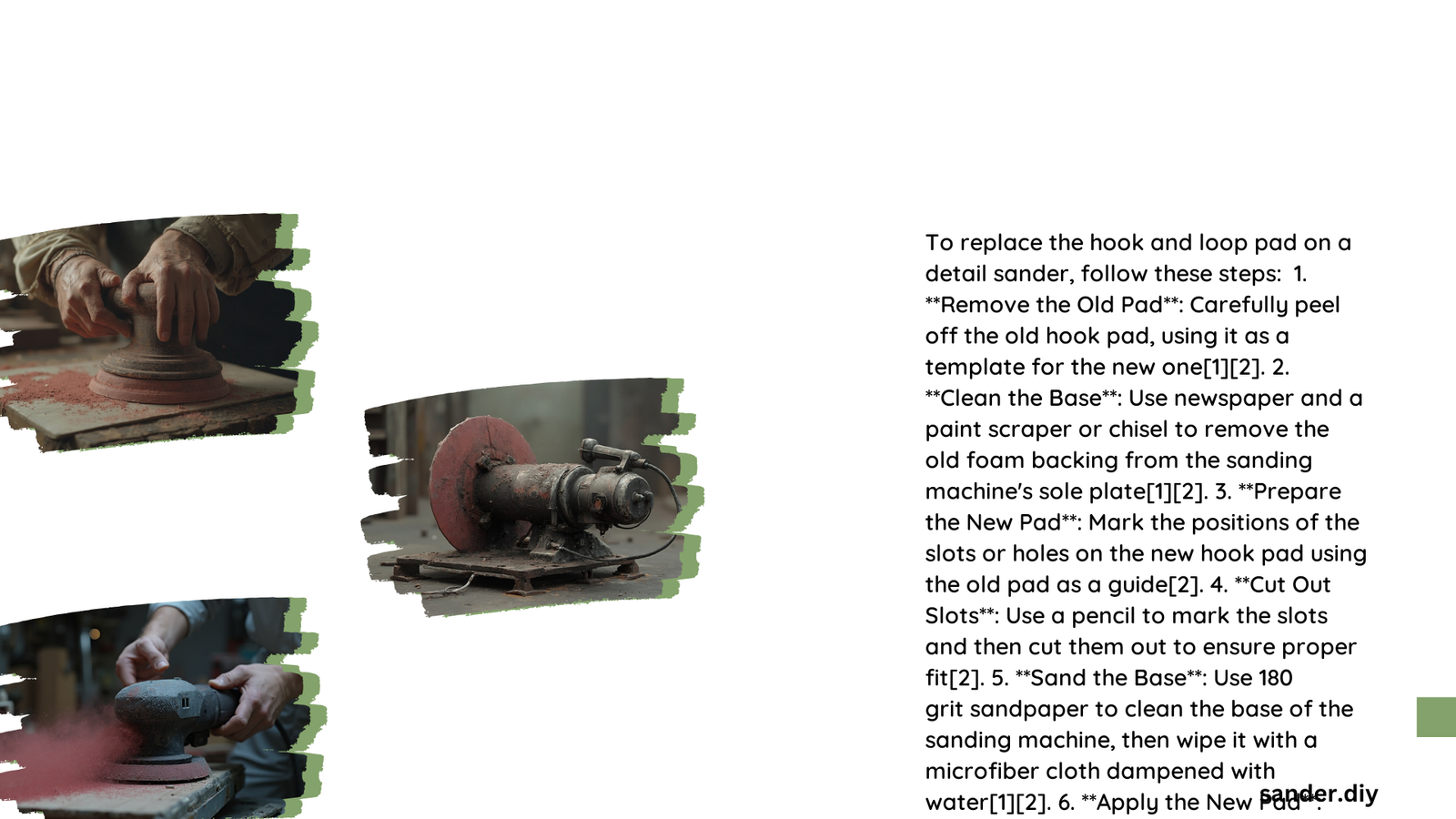Detail sander hook and loop systems are crucial components for efficient and effective sanding. These systems provide a secure attachment between the sander and sanding sheets, allowing for quick changes and consistent performance. The hook and loop mechanism ensures even pressure distribution, enhancing the quality of the sanding process across various materials and applications.
What are the Key Features of Detail Sander Hook and Loop Systems?
Detail sander hook and loop systems consist of two main components:
- The hook side: Attached to the sander’s base plate
- The loop side: Found on the back of sanding sheets
Key features include:
- Quick and easy attachment/detachment
- Even pressure distribution
- Compatibility with various grit sizes
- Durability for extended use
- Flexibility to conform to different surfaces
How Do Detail Sander Hook and Loop Pads Differ in Dimensions and Materials?

Detail sander hook and loop pads vary in size and composition depending on the sander model and intended use. For example:
- Milwaukee M12 Orbital Detail Sander Replacement Pad (49-36-2531):
- Length: 3.5 inches
- Material: Features a bend-resistant design with premium hook and loop backing
- Compatibility: Exclusively for Milwaukee M12 Fuel Orbital Detail Sander (2531-20)
Other brands may offer different dimensions and materials to suit specific sander models and applications.
What Grit Options are Available for Detail Sander Hook and Loop Discs?
Detail sander hook and loop discs come in various grit options to accommodate different sanding needs:
| Grit Range | Classification | Typical Uses |
|---|---|---|
| 40-60 | Coarse | Heavy material removal, stripping old finishes |
| 80-120 | Medium | General sanding, smoothing surfaces |
| 150-180 | Fine | Preparing surfaces for finishing |
| 220-400 | Very Fine | Final sanding before finishing, between-coat sanding |
| 600+ | Ultra Fine | Polishing and creating high-gloss finishes |
How Does Grit Selection Impact Sanding Performance?
Grit selection significantly affects sanding performance:
- Material Removal Rate: Coarser grits remove material faster but leave a rougher surface.
- Surface Smoothness: Finer grits produce smoother surfaces but remove less material.
- Finish Quality: Progressing through grits from coarse to fine results in a higher-quality finish.
- Sanding Time: Using the appropriate grit for the task can reduce overall sanding time.
What are the Best Practices for Using Detail Sander Hook and Loop Systems?
To maximize the effectiveness of detail sander hook and loop systems:
- Start with the appropriate grit for your task
- Progress through grits systematically
- Keep the hook side clean and free of debris
- Replace worn-out sanding sheets promptly
- Ensure proper alignment when attaching sanding sheets
- Apply even pressure during sanding
- Clean or vacuum the sanding surface between grit changes
How Does Compatibility Affect Detail Sander Hook and Loop Performance?
Compatibility between the sander, hook and loop pad, and sanding sheets is crucial for optimal performance:
- Fit: Proper fit ensures even pressure distribution and prevents slippage
- Adhesion Strength: Compatible components provide secure attachment during use
- Durability: Matched components typically result in longer-lasting hook and loop systems
- Sanding Efficiency: Proper compatibility leads to more efficient material removal and smoother finishes
What Maintenance is Required for Detail Sander Hook and Loop Systems?
Regular maintenance of detail sander hook and loop systems includes:
- Cleaning the hook side after each use to remove dust and debris
- Inspecting the hook and loop for wear or damage
- Replacing the pad when hooks become flattened or worn
- Storing the sander with a protective sanding sheet attached to prevent hook damage
- Avoiding exposure to extreme temperatures or moisture
How Can Users Troubleshoot Common Detail Sander Hook and Loop Issues?
Common issues and solutions include:
- Sanding Sheet Slippage:
- Ensure the sheet is properly aligned and pressed firmly onto the pad
- Check for debris between the hook and loop surfaces
-
Replace worn-out hook and loop pads
-
Uneven Sanding:
- Verify that the sanding sheet is flat and wrinkle-free
- Check for worn areas on the pad and replace if necessary
-
Ensure even pressure distribution during sanding
-
Difficulty Attaching/Detaching Sheets:
- Clean the hook side thoroughly
- Inspect for damage to the hook and loop surfaces
- Consider replacing the pad if hooks are excessively worn
By understanding these aspects of detail sander hook and loop systems, users can achieve better sanding results and extend the life of their tools and accessories.
References:
1. https://www.coastaltool.com/products/milwaukee-49-36-2531-m12-orbital-detail-sander-replacement-pad
2. https://www.milwaukeetool.com/Products/49-36-2531
3. https://www.homedepot.com/p/Milwaukee-M12-Orbital-Detail-Sander-Pad-1-Pack-49-36-2531/321751959
